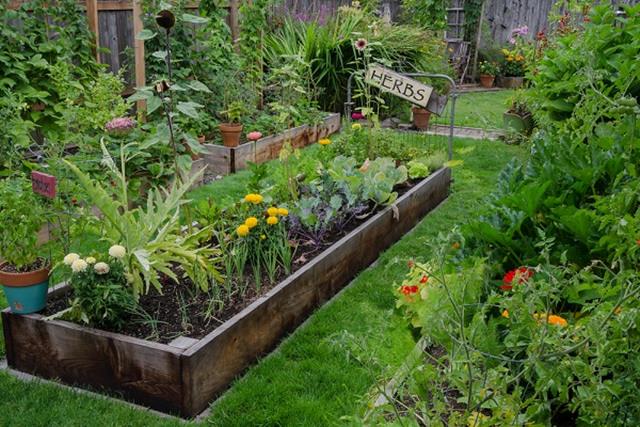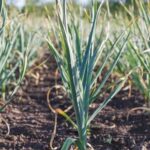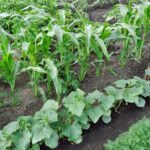What is a raised bed for vegetable gardening? Raised bed gardening involves planting vegetables in soil that is higher than the surrounding ground, contained within a frame. This method offers numerous benefits and is becoming increasingly popular among gardeners of all levels of experience.
One of the primary advantages of using raised beds for vegetable gardening is the improved soil quality. The elevated nature of raised beds allows for better drainage, warmer soil temperatures and reduced soil compaction, leading to healthier plants and higher yields. Additionally, raised beds can provide easier access for tending to crops, making maintenance and harvesting more efficient.
Building a raised bed for vegetable gardening is a straightforward process that can be customized based on individual preferences and needs. By following some basic guidelines and choosing the right materials, you can create a versatile and productive growing space in your own backyard.
Whether you are new to gardening or have been cultivating vegetables for years, understanding the fundamentals of raised bed gardening can help you make informed decisions when planning your next growing season. In this article, we will explore the various aspects of this gardening method, from construction and location selection to soil preparation and plant choices.
Whether you have limited space or simply want to enhance your garden’s productivity, raised bed gardening may be the solution you’ve been searching for.
Benefits of Using Raised Beds for Vegetable Gardening
Raised bed gardening has become increasingly popular among vegetable gardeners due to the numerous benefits it offers. One of the main advantages of using raised beds for vegetable gardening is the improved drainage and soil aeration. The raised structure allows excess water to drain more efficiently, preventing waterlogging and root rot in plants. Additionally, the loose, well-aerated soil in raised beds promotes healthier root development and overall plant growth.
Another benefit of raised bed gardening is the opportunity to better control the quality of the soil. Gardeners can customize the soil blend in their raised beds to suit the specific needs of different types of vegetables. This means that you can create an optimal growing environment for your plants, whether they require a sandy, loamy, or clay-like soil composition.
Furthermore, using raised beds for vegetable gardening can make it easier to manage weeds and pests. The defined boundaries of a raised bed help keep weeds from encroaching on your vegetable garden, reducing the amount of time and effort needed for weeding. Additionally, if properly constructed with a barrier at the base, raised beds can offer some protection against burrowing pests such as moles and voles. Overall, these benefits contribute to a more efficient and successful vegetable gardening experience.
How to Build a Raised Bed for Vegetable Gardening
A raised bed for vegetable gardening is a great way to maximize space, improve drainage, and create ideal growing conditions for your plants. Here are the steps to build a raised bed for your vegetable garden:
1. Select the location: Choose a spot that receives at least 6-8 hours of sunlight per day and is easily accessible for watering and maintenance.
2. Determine the size: Raised beds can be any size, but it’s best to keep them narrow enough that you can comfortably reach the center from either side.
3. Build the frame: You can use various materials such as wood, bricks, or composite lumber to create the frame of your raised bed. Use untreated wood or food-safe materials to avoid chemicals leaching into the soil.
4. Assemble the bed: Secure the corners of the frame with screws or brackets and make sure it is level by using a carpenter’s level.
5. Fill with soil: Once assembled, fill the raised bed with a mix of topsoil, compost, and other organic matter to create a nutrient-rich environment for your vegetables.
By following these steps, you can easily build a raised bed for your vegetable garden and enjoy the benefits of improved soil structure and higher yields of healthy produce.
Best Materials for Constructing a Raised Bed
When it comes to constructing a raised bed for vegetable gardening, choosing the right materials is crucial to ensure its durability and longevity. There are several options available for constructing a raised bed, each with its own advantages and considerations.
Wood
One of the most popular choices for constructing a raised bed is wood. Cedar and rot-resistant hardwoods are often recommended due to their durability and natural resistance to decay. These materials can last for many years and provide a beautiful, natural look to your garden. It’s important to avoid treated woods that contain chemicals that can leach into the soil and affect plant growth.
Stone or Brick
For a more permanent and sturdy option, stone or brick can be used to construct raised beds. These materials offer excellent support and can create a beautiful visual effect in the garden. However, they can be more labor-intensive to install compared to wood, and may require professional help if you’re not experienced in masonry work.
Metal
Metal raised beds are becoming increasingly popular due to their modern look and long-lasting durability. Materials such as galvanized steel or aluminum are resistant to rot and pests, but they can retain heat more than other materials which may require extra attention during hot weather.
It’s important to consider your budget, aesthetic preferences, and the specific needs of your garden when choosing the best material for constructing a raised bed. Each option has its own benefits and drawbacks, so take the time to research and decide which material will work best for your vegetable gardening needs.
Choosing the Right Location for Your Raised Bed Garden
When it comes to choosing the right location for your raised bed garden, there are several factors to consider in order to ensure the success of your vegetable gardening. Here are some tips and considerations for finding the perfect spot for your raised beds:
- Sunlight: Choose a location that receives at least 6-8 hours of sunlight per day. This is crucial for the healthy growth of most vegetables. Be mindful of any nearby trees or buildings that may create shade during certain times of the day.
- Accessibility: Consider the accessibility of your raised bed garden. It should be easily accessible for planting, weeding, watering, and harvesting. Also, consider how you will navigate around the beds – make sure there is enough space between them for walking and working.
- Water Drainage: Ensure that the location has good water drainage to prevent waterlogged soil, which can be detrimental to plant health. Avoid low-lying areas where water tends to pool.
Additionally, it’s important to consider other environmental factors such as wind exposure and proximity to wildlife or pets that may tamper with your garden. By taking these factors into account, you can choose a prime location for your raised bed vegetable garden that will set you up for success in growing bountiful crops.
Soil Preparation and Maintenance for Raised Bed Vegetable Gardening
Soil Preparation
Before starting your raised bed vegetable garden, it’s important to prepare the soil to provide a healthy environment for your plants. Remove any weeds, rocks, and debris from the area where your raised bed will be located. Once the area is clear, you can begin adding soil to your raised bed. A good mix of topsoil, compost, and organic matter will provide the necessary nutrients for your vegetables to thrive.
Soil Maintenance
Maintaining the quality of the soil in your raised bed is crucial for the long-term success of your vegetable garden. Regularly checking the moisture level of the soil is essential, as raised beds can dry out more quickly than traditional gardens. Mulching the surface of the soil with organic materials such as straw or wood chips can help retain moisture and suppress weed growth.
Adding organic matter to the soil annually will replenish nutrients that are used up by growing plants. Compost, well-rotted manure, or other organic fertilizers can be added to ensure that your vegetables have access to essential nutrients throughout their growing season.
Pest and Disease Management
Raised beds can also offer some protection against pests and diseases due to their elevated nature. However, it’s still important to regularly inspect your plants for signs of pest infestations or disease. Using natural pest control methods such as beneficial insects or companion planting can help keep pests at bay without resorting to chemical pesticides that can harm beneficial organisms in the soil.
Types of Vegetables That Thrive in Raised Beds
There are certain types of vegetables that thrive particularly well in raised bed gardens. The structure and composition of raised beds create an environment that is conducive to the growth of various vegetable plants. One of the main advantages of raised bed gardening is the ability to control the soil quality and nutrients, which can lead to healthier and more productive vegetable plants.
Vegetables that have deep root systems, such as tomatoes, carrots, and potatoes, benefit greatly from the loose, well-draining soil typically found in raised beds. This type of soil allows for better aeration and moisture retention, which can promote strong root development and reduce the risk of waterlogging or compacted soil.
Leafy greens like lettuce, spinach, and kale also thrive in raised bed gardens due to the ease of managing soil moisture levels. Raised beds provide improved drainage, which helps prevent waterlogged conditions that can be detrimental to these types of vegetables. Additionally, the elevated height of raised beds can make it easier for gardeners to harvest these crops without having to bend or stoop too much.
Other vegetables that do well in raised beds include peppers, cucumbers, radishes, and herbs such as basil and cilantro. These plants benefit from the warm soil conditions often found in raised beds and are less susceptible to common gardening problems like weeds and pests. With proper care and attention to soil quality, a wide variety of vegetables can thrive in a raised bed garden.
| Vegetable | Reasons for Thriving in Raised Beds |
|---|---|
| Tomatoes | Deep root system benefits from loose, well-draining soil |
| Lettuce | Ease of managing soil moisture levels |
| Peppers | Benefit from warm soil conditions and reduced weed problems |
Tips for Successful Raised Bed Vegetable Gardening
Raised bed gardening can be a highly effective way to grow vegetables, and there are several tips for ensuring that your raised bed vegetable garden is successful. One important tip is to carefully plan out the layout of your raised beds to maximize space and sunlight for each vegetable. Consider the mature size of each plant when arranging them in the raised bed, and make sure taller plants do not shade smaller ones.
Another tip for successful raised bed vegetable gardening is to properly water and fertilize your plants. Since raised beds drain more quickly than traditional gardens, it’s important to water them more frequently, especially during hot weather. Additionally, adding compost or organic fertilizer to the soil before planting will ensure that your vegetables have access to essential nutrients.
Finally, it’s important to keep an eye on pests and diseases in your raised bed garden. Check your plants regularly for signs of insect damage or disease, and take measures to prevent these issues from spreading throughout your garden. You can use natural pest control methods such as beneficial insects or neem oil, which are safer options for growing vegetables.
| Raised Bed Gardening Tip | Details |
|---|---|
| Careful Layout Planning | Arrange plants according to their mature size and sunlight needs. |
| Proper Watering and Fertilizing | Water more frequently and add compost or organic fertilizer. |
| Pest Control | Regularly check for pests and diseases; use natural control methods. |
Conclusion and Final Thoughts on Raised Bed Gardening
In conclusion, raised bed gardening offers numerous benefits for those looking to grow vegetables. From improved soil drainage to reduced weed growth, the advantages are undeniable. By using the right materials and choosing an optimal location with plenty of sunlight, gardeners can create a thriving raised bed garden.
When constructing a raised bed, it’s important to consider the type of material used. Whether it’s wood, concrete blocks, or composite materials, each choice has its own set of pros and cons. Furthermore, proper soil preparation and maintenance are essential for the success of a raised bed garden. With regular fertilization and watering, as well as periodic soil testing, gardeners can ensure that their vegetables have the best chance to thrive.
Lastly, when selecting vegetables for a raised bed garden, it’s crucial to choose varieties that are suitable for this type of growing environment. Compact and vining plants such as tomatoes, peppers, lettuce, and carrots tend to do well in raised beds.
With the right care and attention, gardeners can enjoy bountiful harvests from their raised bed vegetable gardens for years to come. Raised bed gardening is a versatile and rewarding option for anyone looking to grow their own produce at home.
Frequently Asked Questions
What Is Considered a Raised Garden Bed?
A raised garden bed is a gardening structure that consists of a contained area with soil elevated above the ground level. This type of garden bed can be made from various materials such as wood, concrete blocks, or recycled plastic, and it provides a defined space for planting and growing vegetables, flowers, or herbs.
What Do You Put in the Bottom of a Raised Garden Bed?
When preparing the bottom of a raised garden bed, it’s advisable to place a layer of landscape fabric to prevent weeds from growing up into the bed.
Next, you can add a layer of cardboard or newspaper to further suppress weed growth and then fill the bottom with organic matter such as compost or aged manure to improve soil fertility over time.
Do I Need a Raised Bed for Vegetable Garden?
While it is not absolutely necessary to have a raised bed for a vegetable garden, there are several advantages to using one. Raised beds provide better drainage and soil conditions, allow for easier maintenance and harvest due to their height, and can even extend the growing season in cooler climates.
Additionally, they offer better control over soil quality and can help deter pests such as gophers or rabbits. Ultimately, whether to use a raised bed for your vegetable garden depends on your specific gardening goals and needs.

If you’re looking to get into vegetable gardening, or are just looking for some tips on how to make your current garden better, then you’ve come to the right place! My name is Ethel and I have been gardening for years. In this blog, I’m going to share with you some of my best tips on how to create a successful vegetable garden.





